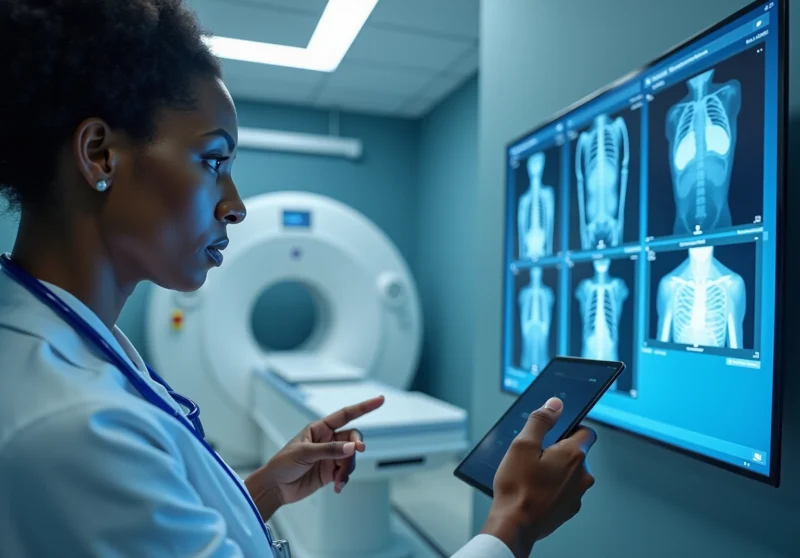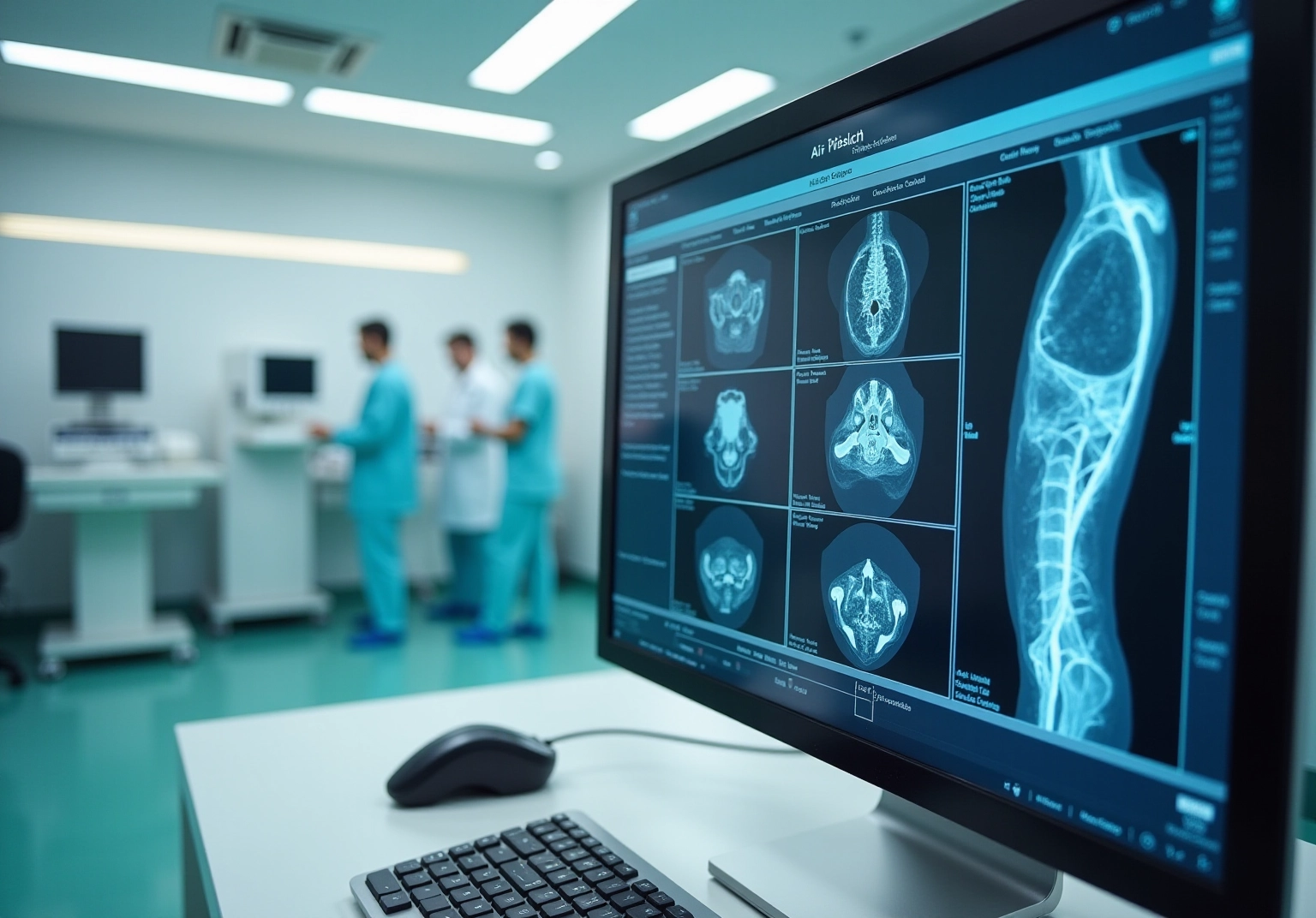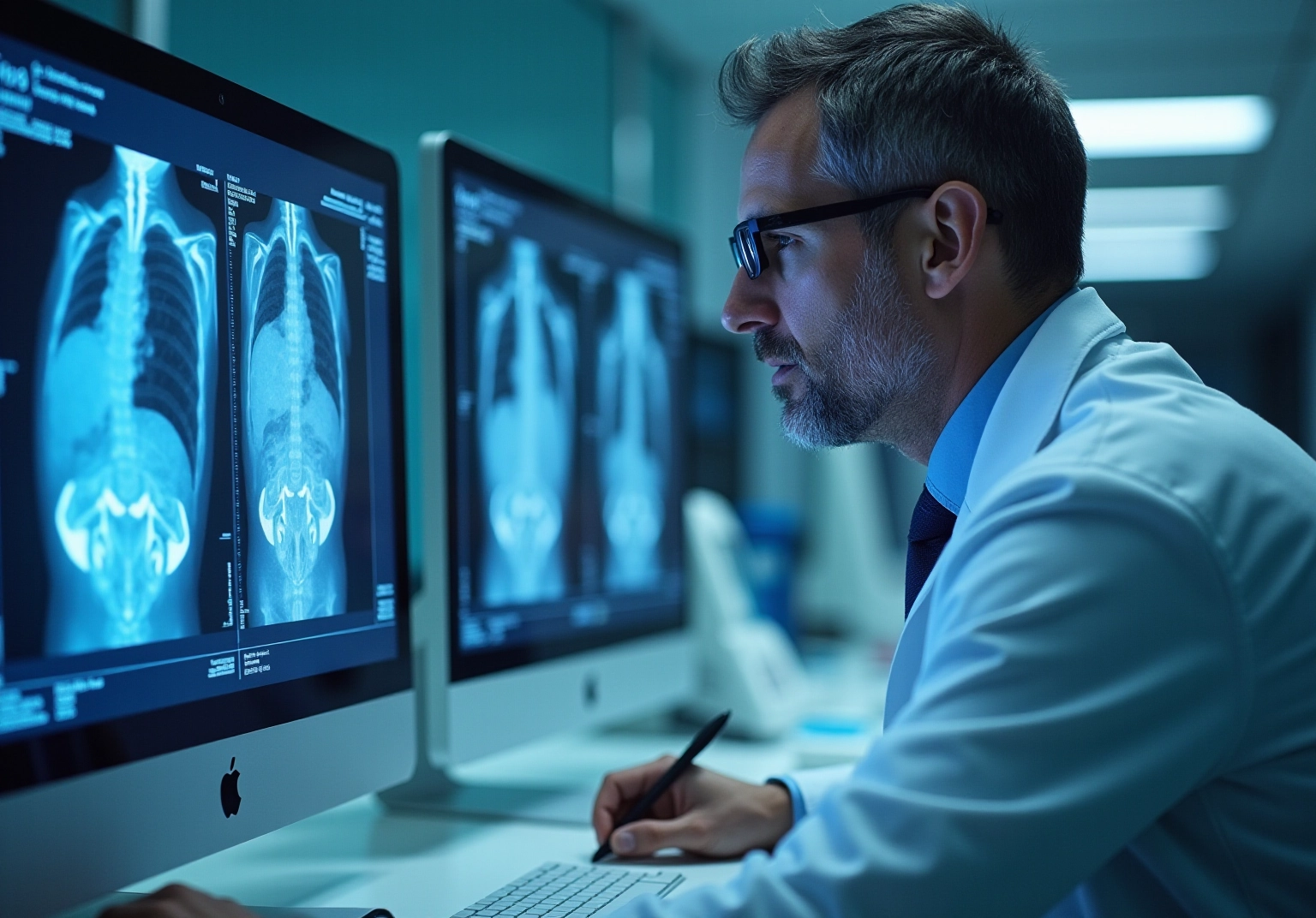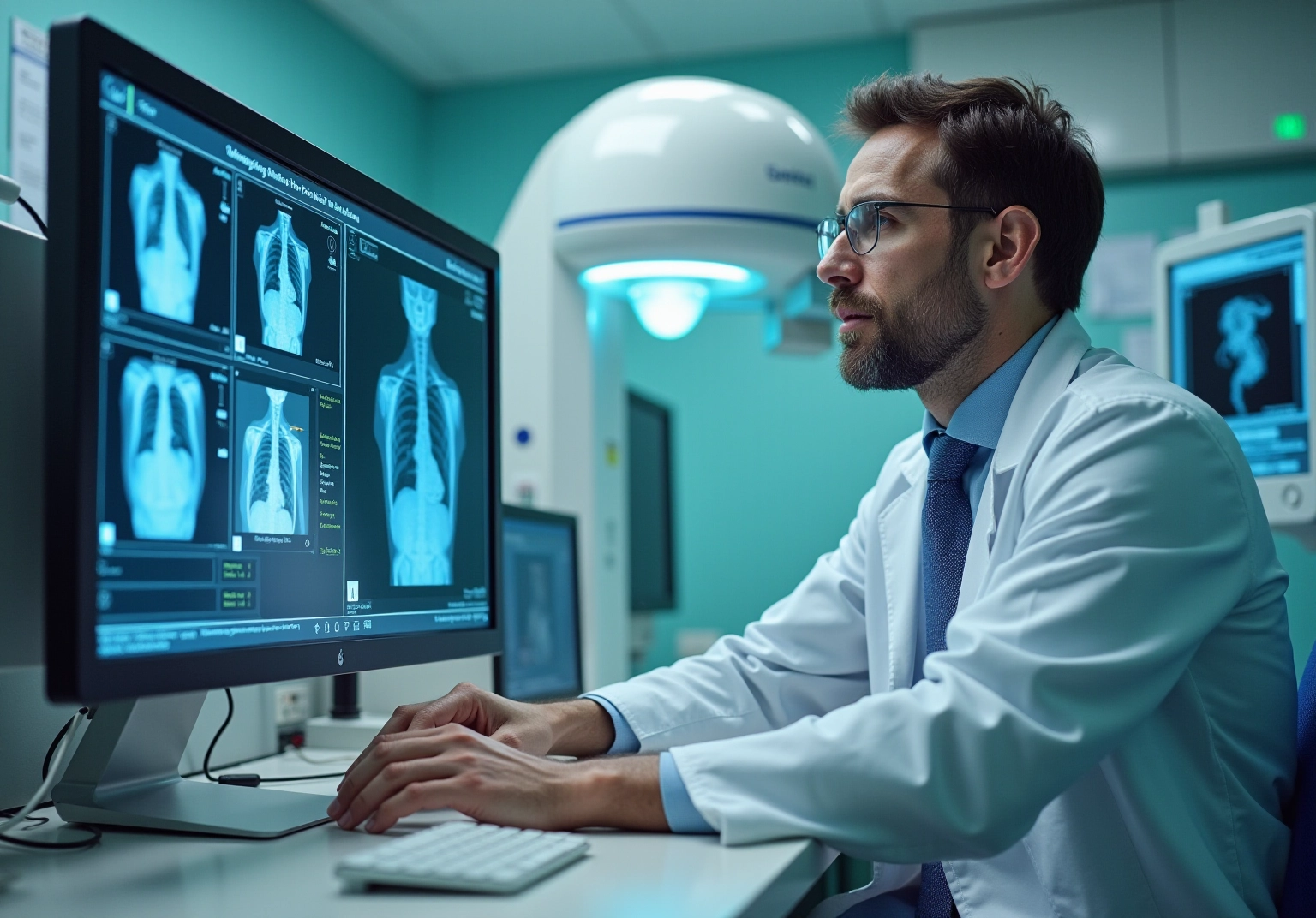
AI in healthcare imaging presents substantial advantages, including enhanced diagnostic precision, expedited analysis, and notable cost savings. However, it also introduces challenges such as stringent data quality requirements and complex regulatory hurdles. This article underscores these dynamics by demonstrating AI’s capacity to elevate detection rates and diminish processing times in comparison to traditional methods.
It is imperative to recognize the necessity for a balanced integration of both AI and conventional technologies within medical practices to fully harness their potential.
AI is rapidly reshaping the landscape of healthcare imaging, presenting transformative potential that promises to enhance diagnostic accuracy and improve patient outcomes. By leveraging advanced algorithms, AI technologies can analyze medical images with remarkable precision, significantly reducing the time required for assessments and improving early detection rates for critical conditions.
However, the integration of AI into healthcare imaging presents challenges, including the need for high-quality data and concerns regarding the interpretability of AI-driven decisions. As the debate continues over the balance between AI’s capabilities and traditional imaging methods, the pressing question remains: can the healthcare industry effectively harness AI’s advantages while mitigating its inherent risks?
AI in healthcare images signifies the application of artificial intelligence technologies to analyze and interpret medical images. Techniques such as machine learning and deep learning empower systems to learn from extensive datasets of images, thereby enhancing diagnostic accuracy over time. By automating routine tasks, recognizing patterns, and forecasting results based on visual data, AI supports radiologists effectively. The integration of AI in healthcare images into visual workflows is designed to boost efficiency, minimize human error, and ultimately elevate patient care through timely and precise diagnoses.
Recent advancements in AI medical visualization have yielded remarkable outcomes. For instance, AI-supported mammogram screenings have resulted in a 20% increase in breast cancer detection rates. Additionally, the NHS’s AI triage system processed over 650,000 X-rays during its inaugural year, achieving a 91% reduction in reporting delays for critical findings. Notably, 63% of healthcare institutions have adopted at least one solution for AI in healthcare images, a substantial rise from just 9% in 2018. These implementations underscore the potential of AI in healthcare images to enhance diagnostic precision and streamline workflows in radiology.
The impact of AI in healthcare images on diagnostic precision is profound. Studies reveal that AI systems can attain up to 93% accuracy in detecting lung abnormalities, significantly surpassing traditional methods. Moreover, the use of AI in healthcare images has demonstrated a 37% reduction in false negative readings in mammography when utilized alongside radiologists. Furthermore, AI systems identify treatment response patterns 60% faster than conventional methods. These advancements not only improve the quality of care but also contribute to superior patient outcomes.
Radiologists exhibit optimism regarding the integration of AI into imaging practices. A significant 40% of leaders in the medical field are currently investing in generative AI technology, reflecting a growing recognition of AI in healthcare images to transform diagnostic practices and enhance care across the healthcare landscape. Additionally, key applications of healthcare AI are projected to generate $150 billion in annual savings for the U.S. healthcare economy by 2026, emphasizing the financial incentives for embracing these technologies.
Conventional diagnostic methods, including X-rays, CT scans, MRIs, and ultrasounds, have been pivotal in medical assessments, offering vital insights into individual health. Each modality boasts distinct advantages:
However, these methods face significant challenges. The dependence on radiologists for interpreting results can lead to variability in diagnoses, resulting in extended turnaround times for patients. Additionally, conventional scanning techniques can be resource-intensive and often involve exposure to ionizing radiation, especially with X-rays and CT scans. Notably, X-rays represent approximately 55.1% of all medical imaging procedures, underscoring their widespread use despite inherent risks. Furthermore, around 3.6 billion diagnostic medical assessments, including X-rays, are performed globally each year, emphasizing the crucial role these methods play in the healthcare landscape. As healthcare systems evolve, addressing these challenges is imperative for improving diagnostic accuracy and enhancing patient outcomes.
When assessing AI in healthcare images in comparison to conventional visualization methods, several key criteria emerge:
Accuracy is paramount; it reflects the capability to correctly identify medical conditions from imaging data. AI in healthcare images has demonstrated exceptional precision, achieving diagnostic correctness rates of up to 94%, significantly surpassing conventional methods. Notably, AI has achieved a 0.98 accuracy rate in colon cancer detection, providing a concrete example of its effectiveness in a specific context.
Equally important is the speed of diagnosis; AI in healthcare images can analyze images in a fraction of the time required by human radiologists. Some systems have reduced assessment times from 15-20 minutes to under 2 minutes per case. This rapid processing not only enhances healthcare but also optimizes workflow efficiency. Furthermore, the use of AI in healthcare images contributes to a 28% improvement in early disease detection, highlighting its impact on patient outcomes.
Cost-effectiveness is another critical factor. The integration of AI in healthcare images for medical diagnostics has the potential to create substantial savings, with estimates suggesting that such AI-driven approaches could save the US medical system approximately $3.7 billion each year. This financial advantage is complemented by the ease of integration, as AI technologies can be seamlessly incorporated into existing electronic health record (EHR) systems, minimizing disruption to current practices.
Finally, regulatory compliance is essential to ensure that both AI and conventional diagnostic techniques adhere to medical standards and guidelines. The FDA has approved more than 130 AI-driven medical visualization devices since 2018, reflecting an increasing acknowledgment of the necessity for regulatory oversight in this rapidly advancing sector. By addressing these criteria, medical professionals can make informed choices regarding the implementation of AI in healthcare images for visual assessments, ultimately enhancing diagnostic precision and outcomes for individuals.

AI in healthcare images is revolutionizing the field by significantly enhancing diagnostic precision through advanced algorithms that can detect anomalies often overlooked by human observation. Studies show that the use of AI in healthcare images for imaging analysis can boost early-stage cancer detection rates by 28%, leading to a remarkable 43% increase in five-year survival rates for patients diagnosed with AI-augmented diagnostics.
Furthermore, AI in healthcare images processes images at a pace far superior to traditional methods; some algorithms can analyze CT angiography images in under two minutes with 91% accuracy, whereas radiologists typically require 15-30 minutes. Additionally, the use of AI in healthcare images to analyze routine chest CT scans for heart disease risk exemplifies its extensive diagnostic capabilities.
The integration of AI in healthcare images not only accelerates decision-making and treatment initiation but also continuously enhances its performance by learning from vast datasets. This capability empowers medical providers to make more informed clinical decisions, ultimately improving patient outcomes.
Moreover, the use of AI in healthcare images eases the administrative burden on radiologists by automating routine tasks, allowing them to focus on more complex cases. This shift can lead to significant cost savings for medical organizations, as operational efficiencies increase and the likelihood of human error diminishes. In fact, the use of AI in healthcare images has demonstrated a reduction in human error in radiology, ensuring that abnormalities are flagged early and accurately identified.
As medical leaders increasingly recognize the value of AI, 39% of them expressed intentions to invest in AI technologies to support clinical decision-making in 2023. This growing investment reflects a broader trend toward adopting AI in healthcare images as a vital resource for enhancing diagnostic precision and operational effectiveness in medical diagnostics.

AI in medical imaging offers significant advantages, yet it faces formidable challenges, particularly the critical need for high-quality, annotated datasets that are essential for effective algorithm training. The accuracy of AI systems is intrinsically linked to the quality of the data on which they are trained; inadequate or poorly annotated datasets can severely compromise performance.
Moreover, the interpretability of AI decisions presents a challenge, as radiologists often find it difficult to understand the rationale behind AI-generated conclusions. Regulatory hurdles further complicate the landscape, with stringent medical regulations potentially delaying the approval of AI technologies.
Additionally, there is an increasing concern regarding over-reliance on AI, which might inadvertently erode the diagnostic skills of radiologists over time. As emphasized by industry leaders, ensuring data quality is paramount; without it, the transformative potential of AI in healthcare images may remain unrealized.

AI and conventional diagnostic methods each present distinct advantages and challenges that medical practitioners must navigate. AI in healthcare images enhances precision, speed, and efficiency, with research indicating that AI-supported visual analysis can improve early-stage cancer detection by 28%, leading to better patient outcomes. Furthermore, AI-driven tools have been shown to reduce redundant scans by 17-24%, potentially saving healthcare systems significant costs.
Nonetheless, traditional methods retain their importance due to their proven reliability and the invaluable expertise of radiologists. With 63% of medical facilities adopting at least one AI visualization solution, the integration of AI in healthcare images into existing workflows is increasingly common. However, providers must also address challenges such as regulatory compliance and the need for high-quality data.
Andrew Ng has likened AI’s transformative potential to that of electricity, positing that it will revolutionize industries, while Sundar Pichai stresses that AI should augment human capabilities rather than replace them. A hybrid approach that merges the strengths of both AI in healthcare images and traditional imaging techniques is likely to produce the most favorable outcomes for patient care, ensuring that technological advancements complement the essential human element in healthcare.

AI in healthcare imaging signifies a transformative shift in medical diagnostics, employing advanced technologies to elevate the accuracy and efficiency of image analysis. The integration of AI not only enhances diagnostic precision but also streamlines workflows, minimizing human error and improving patient care. By leveraging the capabilities of machine learning and deep learning, healthcare providers can achieve timely and precise diagnoses, ultimately leading to superior patient outcomes.
As we delve into the comparison of AI and traditional imaging techniques, several pivotal insights arise. AI has showcased remarkable accuracy and speed, significantly enhancing early-stage cancer detection rates while reducing the time required for image analysis. Although traditional methods retain their value due to reliability and the expertise of radiologists, the increasing adoption of AI solutions underscores a clear trend towards modernization within the healthcare sector. Nevertheless, challenges such as the necessity for high-quality data, regulatory compliance, and the risk of over-reliance on technology must be addressed to fully harness AI’s potential.
In light of these insights, adopting a hybrid approach that merges the strengths of both AI and traditional imaging techniques emerges as the most effective strategy for enhancing patient care. As the healthcare landscape continues to evolve, stakeholders are urged to invest in AI technologies while ensuring that human expertise remains central to diagnostic practices. This balanced integration will not only enhance diagnostic accuracy but also cultivate a more efficient and effective healthcare system, ultimately benefiting patients and providers alike.